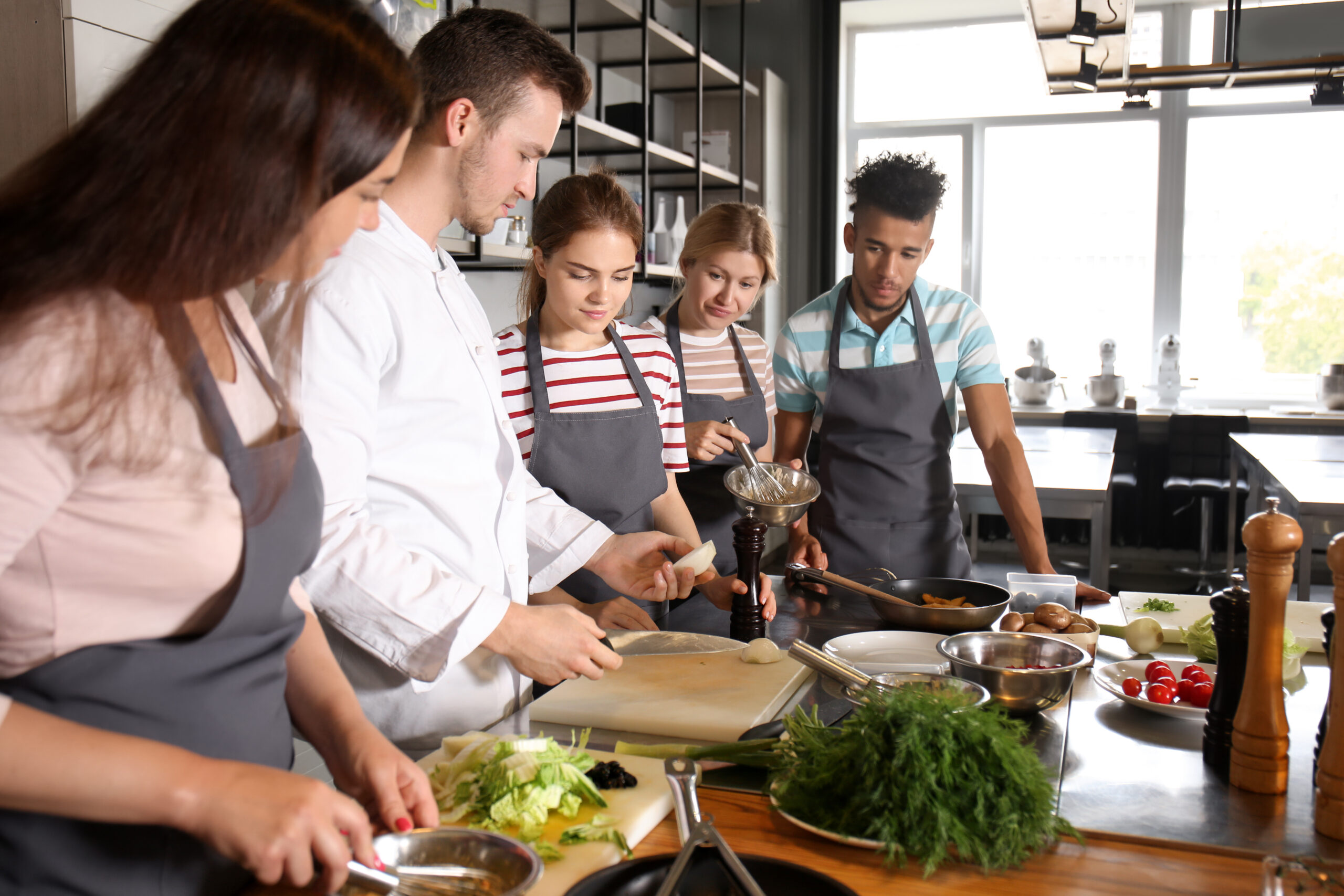In a culinary scene that’s boiling over with competition, restaurant owners and event planners are constantly stirring the pot in search of that elusive, delectable formula that will set their establishment apart. One ingredient that’s been simmering to perfection in recent years is the restaurant cooking class. Not only does this immersive experience offer patrons a unique way to engage with their favorite dining spots, but it also serves as a powerful marketing tool, creating memorable connections that foster customer loyalty. Are you ready to dish out a cooking class with guests returning for seconds? Here’s your recipe for success.
The Cravings Cornerstone: Defining Your Class
Before you start chopping onions or designing invitations, it’s essential to define the flavor of your class. What are you hoping to achieve? Is it a fun, lighthearted evening where guests sip wine and learn to make gourmet desserts or a more serious, skill-building session for aspiring home chefs? Here are a few tasty themes to consider:
Cuisine-Specific Classes
Pick a cuisine your restaurant excels in and offer a class that teaches patrons the fundamentals. Italian pizza-making, the art of sushi, or perfecting the paella — the world’s culinary stage is your oyster!
Seasonal Workshops
Base your class on the flavors of the season. For example, a summer class could focus on creating the perfect grill menu, while a winter session could cover comfort food classics.
Chef’s Table Demonstrations
Host a “dinner and show” where your Head Chef performs a complete meal from start to finish, sharing insider tips, and then serves the dishes to the class. It’s a masterclass in action!
Whichever theme you select, ensure it aligns with your brand and is something you can offer with expertise and enthusiasm.
Prepping Your Plan
With your class theme locked in, moving to the preparation phase is time. This is where you’ll build the structure of your event from the ground up. The key ingredients here are:
Curriculum and Recipes
Develop a detailed outline for your class that includes everything from the curriculum (e.g., knife skills, sauce preparation, plating techniques) to the recipes you’ll be using. Ensure these are realistic for your attendees’ time frame and skill level.
Gathering Supplies
This involves more than just ingredients. You’ll need to source equipment, including kitchen tools, workstations, and unique items like chef’s hats and aprons to set the right ambiance. Also, consider providing printed copies of the recipes for attendees.
Setting the Date and Selling Tickets
Choose a date that works for your restaurant’s schedule, and consider how far in advance you want to promote the class. Once set, use traditional methods like posters, word-of-mouth, and digital platforms to sell tickets.
Marketing Material
Create compelling marketing materials that communicate your class’s value and unique experience. Utilize social media, your restaurant’s website, and email marketing to reach potential attendees.
Sizzling Service: Hosting the Class
This is where the actual cooking happens, literally and in terms of your experience. Here’s how to ensure your class is a hit:
Decor and Ambiance
Set the scene with decorations that match the theme of your class. Playlists curated for the type of cuisine or season can further enhance the setting.
Welcome and Introduction
Start your event with a warm welcome and a clear introduction to what guests can expect. This is also a perfect time to introduce the person leading the class.
Hands-On Instruction
The majority of the class time should be devoted to hands-on cooking. This is where the real bonding and learning happens. Be sure to circulate the room, offering personalized guidance and tips.
Tasting and Sharing
After the cooking is done, guests should have the opportunity to taste their creations. This should be a festive, communal experience where everyone can share what they’ve made.
Feedback
Take the chance to gather feedback. Provide a survey or simply chat with participants to learn what they enjoyed and what could be improved for future classes.
The Finishing Touches: Post-Class Follow-Up
Your event will continue once the dishes are done. Keep the spirit of the class alive with these post-event tactics:
Social Sharing and Promotion
Encourage attendees to share their experiences on social media and consider running a photo contest. This can extend the reach of your class well beyond the attendees themselves.
Recipe Sharing
Send attendees the recipes from the class so they can recreate their dishes at home. This simple yet appreciated service keeps your restaurant in their minds and kitchens.
Personal Invitations to Future Events
For those who enjoyed the class, send out personalized invitations to future events at your restaurant. This can be a fantastic way to build a community around your establishment.
The Verdict
Whether you’re looking to bolster your brand, make meaningful connections with patrons, or simply have a blast in the kitchen, hosting a cooking class at your restaurant is an excellent way to achieve all these goals. By carefully planning and executing a class that aligns with your restaurant’s strengths and values, you open the door to a new world of customer engagement and satisfaction. Prepare well, cook passionately, and serve with pride, and your class will surely be a delightful success, leaving participants craving more.

